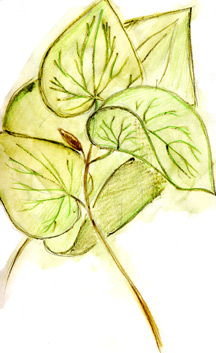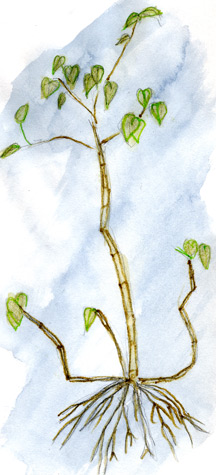Plant
Study 
Kava Kava (Piper methysticum)
I've been intrigued by kava for a few years now.
When I lived in Seattle, I had a friend who rode the bus with me to work. He used to get these Kava drinks, I think from Whole Foods market. He began bringing one for me as well. I'd drink them in the mornings, and my tounge would become pleasantly tingly and slightly numb. I suppose they relaxed me, but not in a way that stripped me of energy. I am excited to experiment with this herb once more.
Kava (Piper methysticum) is a very important plant to many indigenous cultures in the Pacific Islands. It was usedas medicine to soothe a variety of afflictions ranging fromheadaches and sleeping problems to treating tuberculosis and leprosy. It is also very renowned for its ceremonial and social use.
Kava has a reputation for  stimulating an intoxicating effect on users. Its effects are similar to alcohol, although the mind is said to remain clear, and drinkers do not become angry or belligerent. It also leaves the drinker with a deep, dreamless sleep, from which they wake the next day fully recovered and without any type of hangover.
stimulating an intoxicating effect on users. Its effects are similar to alcohol, although the mind is said to remain clear, and drinkers do not become angry or belligerent. It also leaves the drinker with a deep, dreamless sleep, from which they wake the next day fully recovered and without any type of hangover.
Kava is a cultivated relative of the wild Piper witchmanii. Some indigenous cultures use them interchangeably. The plants are very similar; their main differences are that P. witchmanii has longer inflorescences. P. witchmanii is able to reproduce, while P. methysticum can only be vegetatively propagated by humans. Its female inflorescences fall off before they are mature, and therefore it is not seed producing.
There are some cautions to be aware of with kava. It has been associated with liver disorder in long-term use. In excessive use, photophobia and diplopia have affected some users. Other side effects of heavy consumption are skin lesions and exanthema. These disappear with the reduction of kava intake. In moderation, it appears to be a safe plant.
To view a copy of my plant monograph, click here
To view a kid-friendly poster about kava, click here